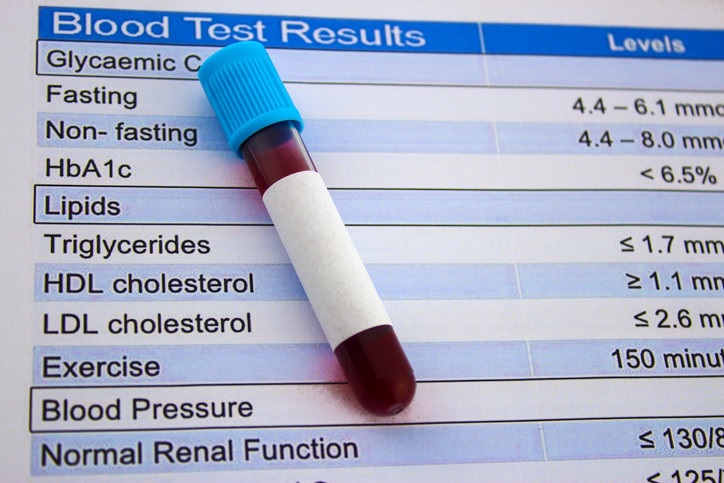
Key points What is the association between very high high-density lipoprotein cholesterol (HDL-C) and outcomes in patients with coronary artery disease (CAD)? Findings In this cohort study of 14,478 participants with CAD enrolled in the United Kingdom Biobank (UKB) and 5,467 participants in the Emory Cardiovascular Biobank (EmCAB), people in the UKB with HDL-C levels greater than 80 mg/ dL had a 96% increased risk of all-cause mortality and a 71% increased risk of cardiovascular mortality after adjustment for covariates, compared to those with HDL-C levels in the range of 40 to 60 mg/dL. These findings were replicated in patients with CAD in the EmCAB. Meaning Very high HDL-C levels are paradoxically associated with an increased risk of mortality in people with CAD. |
Importance
Previous studies have shown a lower cardiovascular risk with higher levels of high-density lipoprotein cholesterol (HDL-C). However, recent data in the general population have shown an increased risk of adverse outcomes at very high HDL-C concentrations.
Aim
To study the association between very high HDL-C levels (>80 mg/dL) and mortality in patients with coronary artery disease (CAD) and to investigate the association of known HDL-C genotypes with high HDL-C outcomes. .
Design, environment and participants
This prospective, multicenter, cohort study, conducted from 2006 to present in the United Kingdom and from 2003 to present in Atlanta, Georgia, recruited patients with CAD from the UK Biobank (UKB) and the Emory Cardiovascular Biobank (EmCAB), respectively. .
Patients without confirmed CAD were excluded from the study. Data analyzes were conducted from May 10, 2020 to April 28, 2021.
Exposure
High HDL-C levels (>80 mg/dL).
Main results and measures
The primary outcome was death from all causes. The secondary outcome was cardiovascular death.
Results
A total of 14,478 participants (mean [SD] age, 62.1 [5.8] years; 11,034 men [76.2%]) from UKB and 5,467 participants (mean [SD] age, 63.8 [ 12.3] years; 3632 men [66.4%]) from the EmCAB were included in the study.
During a median follow-up of 8.9 (IQR, 8.0-9.7) years in UKB and 6.7 (IQR, 4.0-10.8) years in EmCAB, a U-shaped association was observed with the highest risk results in those with low and very high HDL-C levels compared to those with mid-range values.
Very high HDL-C levels (>80 mg/dL) were associated with an increased risk of death from all causes (hazard ratio [HR], 1.96; 95% CI, 1.42-2 .71; P < .001) and cardiovascular death (HR, 1.71; 95% CI, 1.09-2.68; P = .02) compared with those with HDL-C levels in the range of 40 at 60 mg/dL in the UKB after adjustment for confounding factors.
These results were replicated in the EmCAB. These associations persisted after adjustment for the HDL-C genetic risk score within the UKB. Sensitivity analyzes demonstrated that the risk of all-cause mortality in the very high HDL-C group was higher among men than women in the UKB (HR, 2.63; 95% CI, 1.75). -3.95, P < 0.001 vs HR, 1.39, 95% CI, 0.82-2.35, P = 0.23).
Conclusions and relevance
The results of this cohort study suggest that very high HDL-C levels are paradoxically associated with an increased risk of mortality in people with CAD. This association was independent of common polymorphisms associated with high HDL-C levels.
Editor’s note
A large body of evidence supports the mechanistic role of high-density lipoprotein cholesterol (HDL-C) in promoting reverse cholesterol transport. Therefore, HDL-C has been postulated to have antiatherogenic properties and has been called good cholesterol . Numerous studies have shown an increased risk of coronary heart disease (CHD) among those with low HDL-C levels, and very high HDL-C levels are often considered protective .
However, pharmacotherapies that increase HDL-C (e.g., niacin, cholesterol ester transfer protein inhibitors) have failed to demonstrate a reduction in the risk of events or even demonstrated a signal of harm . However, less attention has been paid to those with very high HDL-C levels, and emerging data from healthy populations suggest that there may be a paradoxical association with increased mortality in this group .















